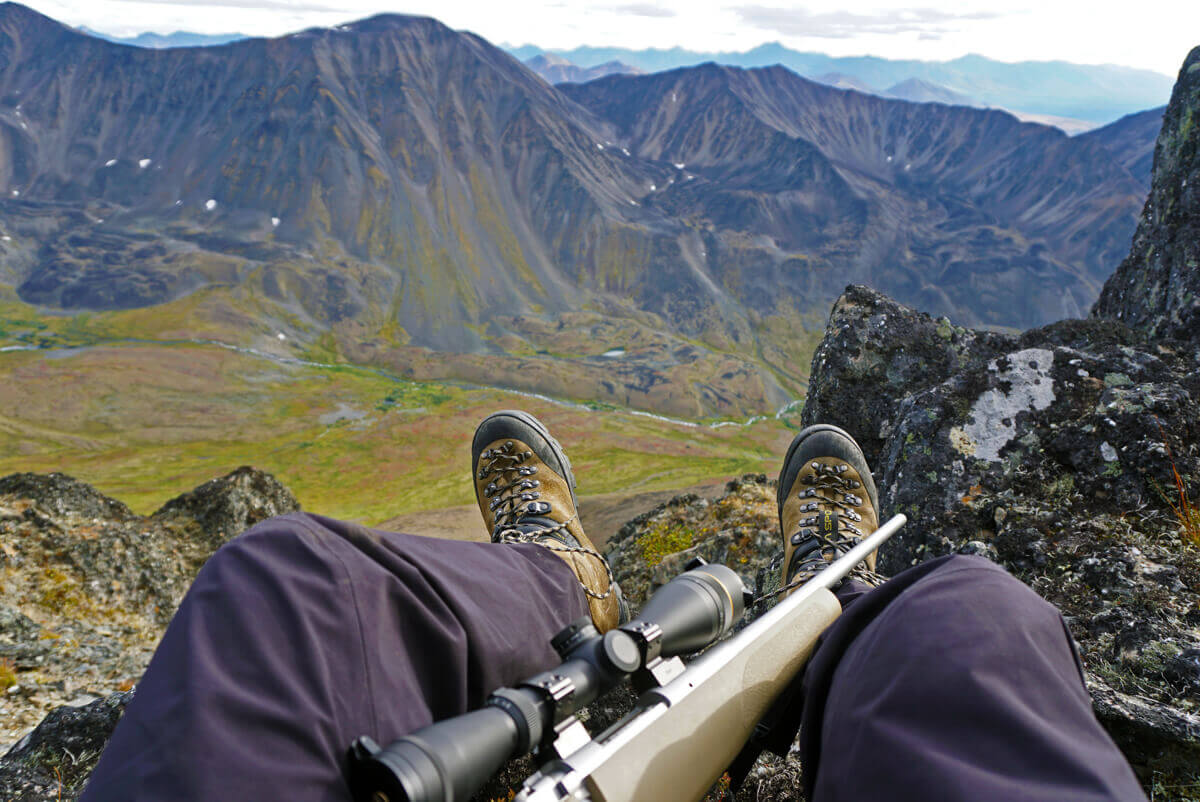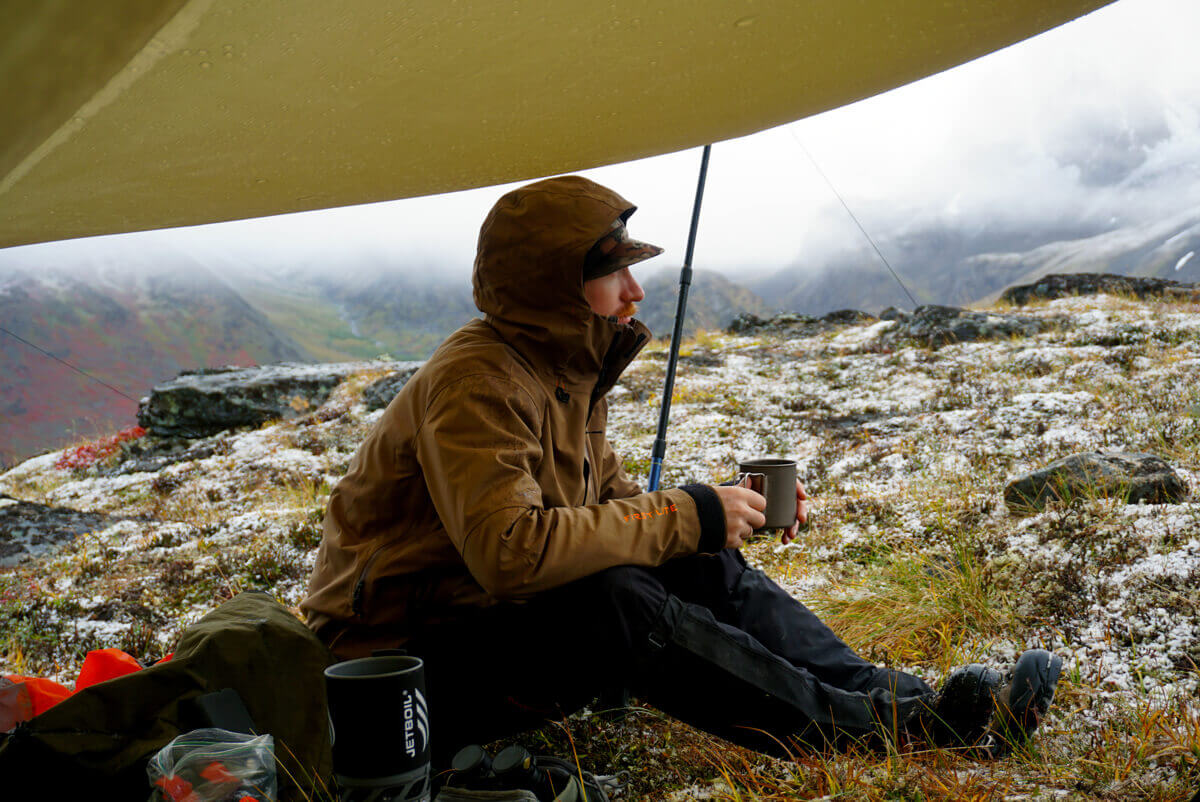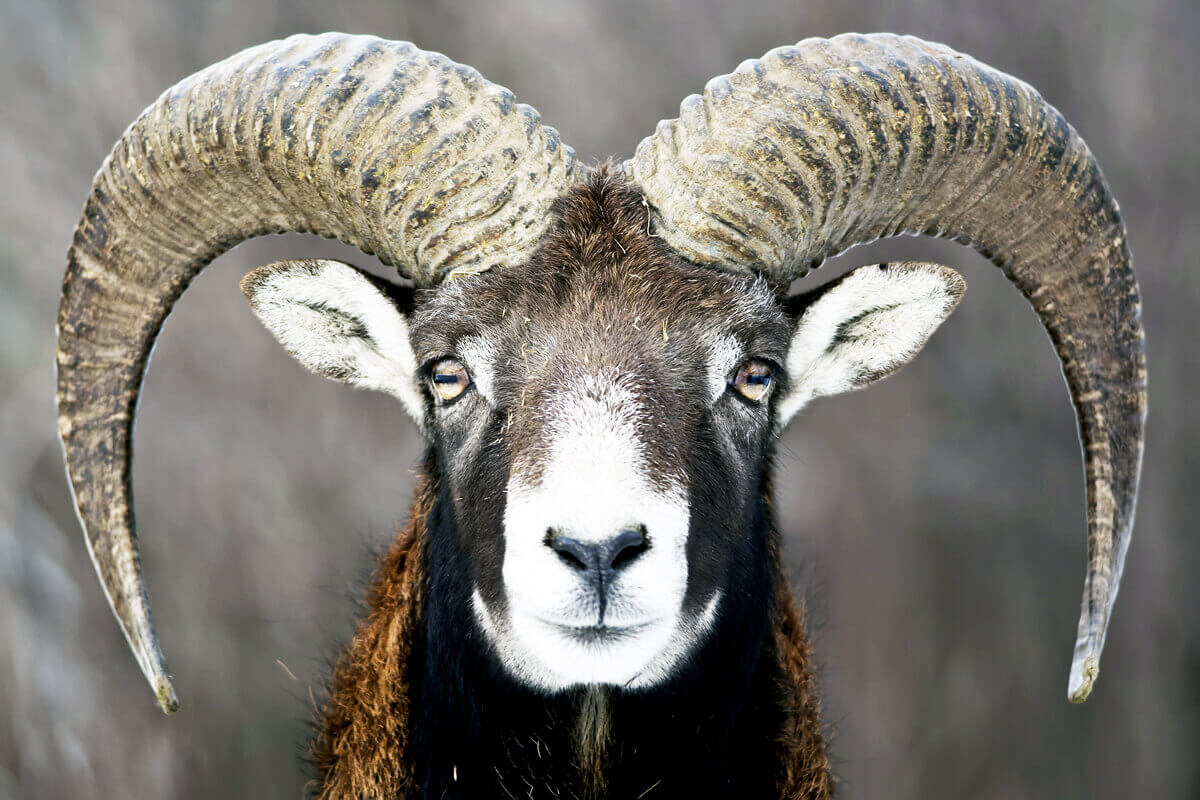By Brian Ohlen
Originally published in Strung Magazine Volume I, Issue III
Each time we step foot in the mountains, the skills learned through past experiences are heavily relied upon. Consciously or not, success is often determined by decisions that were shaped through journeys past. Books provide a baseline for learning, but theories need to be tested before they can be incorporated into our quiver of skills.
New to Alaska, I was eager to test my mountain skills against what is often regarded as the toughest hunt in North America: a self-supported, walk-in Dall sheep hunt. Months of planning and years in the mountains preceded the soggy march into Alaska’s sheep country.
Like so many first time Dall sheep hunters, our packs were lighter on the hike out than the hike in. We didn’t bring home the meat and hide we had hoped for, but we were left with a handful of lessons learned and snapshots of a wilderness hunt that will fuel me through the winter and into the sheep mountains next August.
Mist, rain, and fog means poor visibility; the worst enemy for any sheep hunter trying to glass up white dots on distant mountain sides. Often there is no better option than to hunker down under a tarp and wait the weather out. Blury glimpses of sheep shrouded in fog kept us rooted in place. Because only full curl, eight year old male sheep are legal to harvest, it seemed foolish to abandone the group until visibility increased and we could determine the sex of the animals.
Lower on the mountain, where the visibility was better, I spotted what looked like a fur-covered Volkswagen. Bear! I shouldn’t have been surprised, but this Alaskan grizzly dwarfed the Yellowstone bears we were accustomed to seeing. Two cubs rolled into view alternating between wrestling and grazing on wild blueberries. They were far enough away to not pose a threat but close enough to occupy my attention. We caught one last glimpse of the bears before zipping up tent door that night. I’d be lying if I said I slept like a baby.
The next day brought more bad weather and an early retreat to the tent where cribbage passed the time. Hash marks on paper substituted for the game board and pegs. Hunting partner and brother Matthew was still trying to climb out of the deficit created by my historic 2008 winning streak during a similarly-wet backpacking trip in Patagonia. Pages upon pages of five-count tally marks added to 121 and marked the winner. A pen and paper are lighter than a cribbage board and also serves as a journal. Dual duty items make the packing list. Single-use gadgets often get the axe in self-supported backcountry adventures.
Finally granted a break in the weather, we traveled up-valley and promptly spotted our first definitive Dall rams. A quick view through the spotting scope showed nine rams, three of which were near enough to being legal animals that a closer look would be required. The topo map showed a possible route that climbed a few thousand feet and would put us within striking distance. We shed layers and began climbing.
Halfway up we stopped for food and water. A seemingly-misplaced spring gurgled up in the middle of a scree field, creating a tiny pool and disappearing just as fast. We filled our bottles and chewed on deer jerky from last season.
The issue of who would get first shot still needed to be decided. Neither of us had ever harvested a ram, and both were keen to notch our tags. We decided to flip a piece of shale. I scratched a B on one side and an M on the other. The rock gods were in my favor.
Once we gained the ridgeline, we saw that our planned route was blocked by cliffs and impassable terrain. Before Plan B could be hatched, Matthew spotted the horns of a different ram only a few hundred yards above on our ridge. The wind was perfect and he hadn’t spotted us. This ram wasn’t legal, but the chances that he was accompanied by other animals just out of view was high.
Needing a better vantage point amongst the craggy, loose spires, we crept up the ridgeline, deliberately placing each step. The going was slow and in many places a missed step meant a long, bloody fall down the mountainside. Eventually we split up, one on either side of the knife edge, increasing the chances that we would get eyes on the animals. I was able to crawl within 125 yards of the ram, and a second sub-legal animal came into view. 
For more than two hours I sat, dangling my feet over a sheer precipice watching the two animals. The only thing more glorious than being in the presence of these sheep was the view beyond my boots. Jaw-dropping landscapes went on for miles. Lost in the moment, the peace was interrupted by a rumbling and crashing that sent my eyes searching for the cause. More than three miles distant, the entire face of a mountainside was crumbling, leaving a cloud of dust and tumbling rocks in its wake. I chuckled in disbelief at the Alaskan grandeur falling away before me. This is what hunting is about.
Brian Ohlen is a writer, hunter, angler, and cyclist based in south-central Alaska. He contributed “Sagebrush and Handlebars: A Desert Bike Hunt” to Strung Volume I, Issue I and “Winter Ptarmigan” for Volume I, Issue IV.


